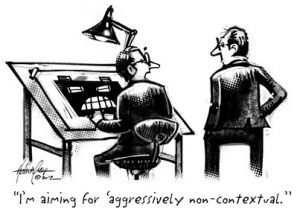The practice of architecture in Bangladesh has gone through several stages of growth. There are many examples of great architecture, such as those of Muzharul Islam, Louis Kahn, and Bashirul Haq, but they are too few and far between. As a young nation, for many years we have been in what I term as “survival mode.” Engineer-like efficiency dictated our construction, which resulted in drab, lifeless colony quarters. But as our purchasing power increases so too does the desire for quality spaces become more of an option. The age of simply surviving is over.
Aesthetics can be costly at times. The challenge is in knowing the appropriate amount, the justifications of where and when. To be economical and cost effective is paramount.
It is a privilege to be an architect.
The ability to visualize something better is engrained in us, but in a developing nation, it can also be a curse. I am never satisfied with my surroundings because I constantly see the potential of how it could all be better – a better city, a better nation, a better world. As an architect it is a struggle to not just cater to the myopic goals within the confines of a given site but to also see how a project fits into its context.
An architect can dictate the direction and quality of life through the manipulation and molding of a given space. Through our sensitivity and sensibilities can we create the essence of a dwelling. A house will be someone’s home where they forge their lives and create their memories. A university is not just the setting for classes, but the platform upon which leaders are made, or where lifelong lovers meet. A hospital is simultaneously life, sickness and death. A new baby will be born just down the hall from a great-grandmother breathing her last. A factory is not just the infrastructure of production but a vital cog in a nation’s economic machine.
Good design matters, and it is my belief that intelligent design can solve any problem.
As a young architect, at the very beginning of my career, I am perhaps naïve and still idealistic. I have met many seasoned architects whose professional trajectories frighten me, and maybe like them, time will wear me down and break my spirit. But for now, I still hope for the best and choose to believe in that little voice inside me called a designer.
Things are changing, and if you have the fortune of finding a client that seeks out the services of an architect, that’s half the battle. The idea of architecture in Bangladesh is still in its infancy and this can only be tackled through meaningful interaction and the execution of good projects.
At the crux of any project is the client, and the client is your patron. At the end of the day they pay for a project and so their requirements must be met. It is the role of an architect to be economical, to be restrained, to guide, advise and help visualize the client’s dream, not just that of the architect. Construction costs money. Don’t expense your dreams onto an unwitting client for the sake of your portfolio.
If a client already knew best then they would do it themselves and not seek your professional services. Professional being the key word. Do not be disillusioned. You are the provider of a service and it is your job to understand the needs, philosophy, mindset and background of your client to best serve him or her. People still think we’re engineers and this is something we have to change.
Nowadays clients see things on the internet, in magazines, or during their travels abroad and want to copy it. Do not succumb to copying.
 When I asked Pritzker Prize Winning Architect Fumihiko Maki about this in an interview last year he said, “I think if you are just influenced you can still correct, but the problem of globalization is that being, sort of, uh… how should I say… the money starts to govern and direct the way architecture or city planning should go, and I think this is a problem we are all facing: Too much money going all around the world.”
When I asked Pritzker Prize Winning Architect Fumihiko Maki about this in an interview last year he said, “I think if you are just influenced you can still correct, but the problem of globalization is that being, sort of, uh… how should I say… the money starts to govern and direct the way architecture or city planning should go, and I think this is a problem we are all facing: Too much money going all around the world.”
Globalization is an ever-growing threat to architecture, especially for Bangladesh. Architects need to work to retain a sense of context and refrain from simply importing foreign concepts that do not apply. A language of design that speaks of who we are, our identity, our culture and our climate is something that will only come through introspection, experimentation and exploration.
Always ask yourself: “What is culturally appropriate?” Do not fall into what is #trending (which at the moment is fair-faced concrete and wood-cladding). Just because something is happening around you doesn’t mean that it’s right. Question everything. Unlearn what you know and see the beauty in absolutely everything. Look at things like a child and as if for first time. Don’t disregard anything. Architects are trained to be something most people don’t understand beyond the superficial.
An architect must be sensitive to all aspects of life for we cater to people above all else. It is not the edifice but the inhabitant who is our main responsibility. An interesting form is useless if it is irrelevant to the function and utility of a space. Biology, anthropology, psychology, geography, climate, history, philosophy are all incumbent facets of architecture.
Finally, think outside the box and don’t be afraid to question what is considered to be the norm.
